January 6, 2021. On this day the world was witness to a singular event in United States history: an attack on the United States Congress.
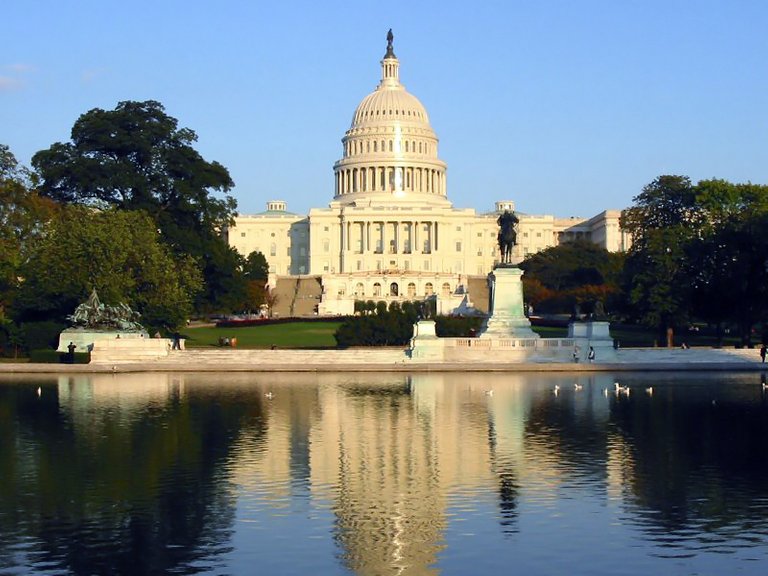
Image credit: F. Malotaux, the Netherlands (@frankmalotaux.nl). Used under CC 2.5 license
Every nation, every people, has a distinct culture. In the United States, there is a heritage which provides fertile ground for violent uprisings. In order to attempt an understanding of the assault on the Capitol, it might be instructive to review relevant political and social currents that have persisted throughout the nation's history:
1.Revolution
2.Sectionalism (Regional disputes)
3.Clash of rural and urban interests
4.A resistance to government authority, especially a tension between the states and the central government.

A Legacy of Revolution
The Declaration of Independence, the foundational document of the United States, asserts the right of a people to separate, by force, from an illegitimate government.
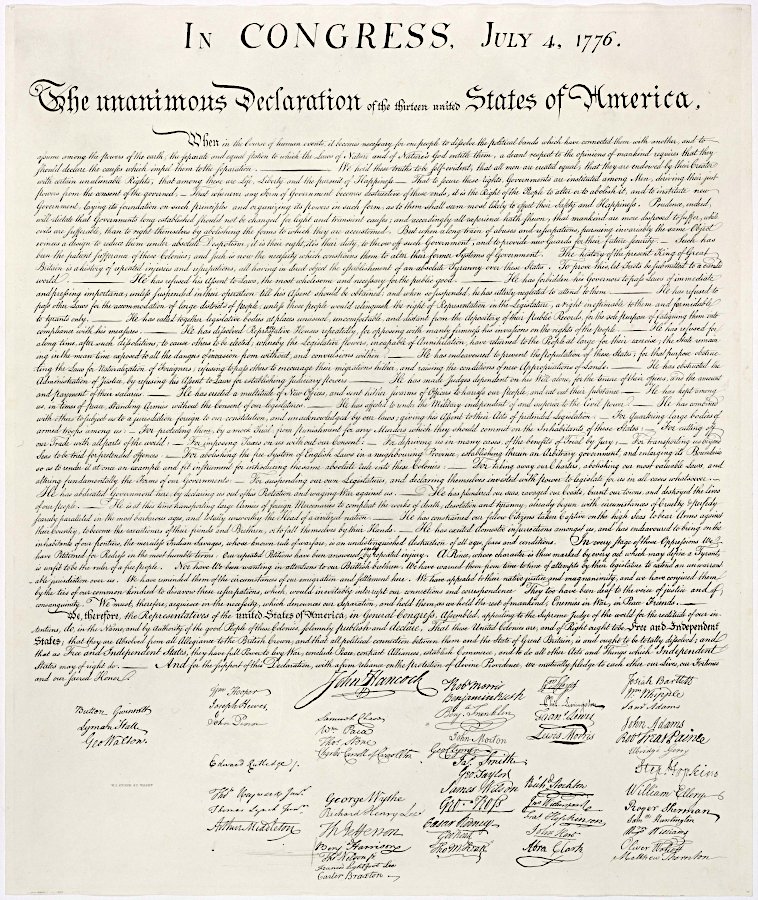
Image credit: Multiple. Public domain.
The Declaration states, in part:
"...That whenever any Form of Government becomes destructive...it is the Right of the People to alter or to abolish it, and to institute new Government"
And less this statement be mistaken for an abstract principal, the document goes on to assert:
"...these United Colonies are, and of Right ought to be Free and Independent States...Absolved from all Allegiance to the British Crown...as Free and Independent States, they have full Power to levy War...we (the signatories) mutually pledge to each other our Lives, our Fortunes and our sacred Honor."
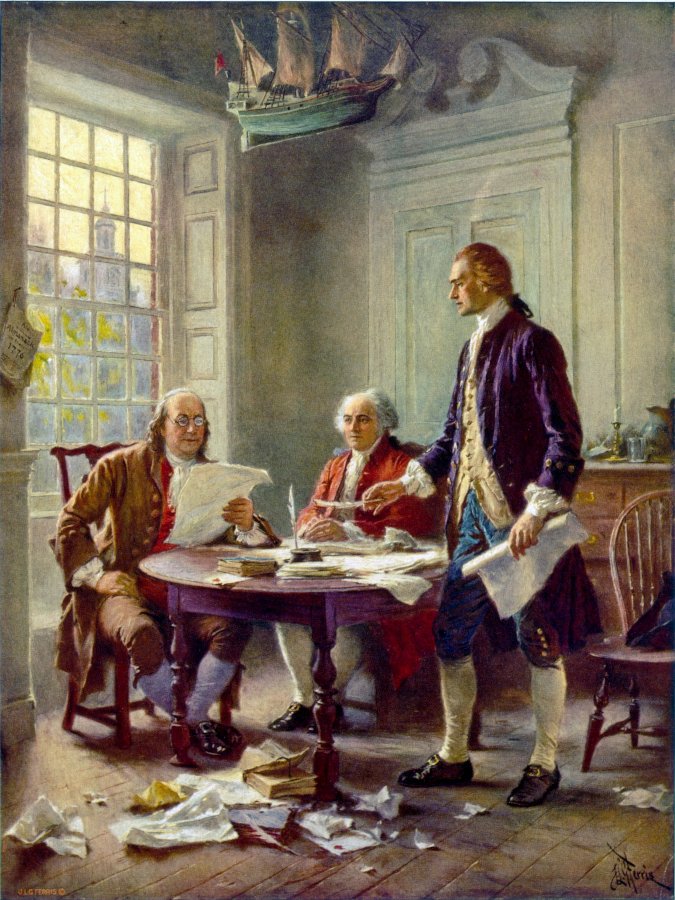
Image credit:Jean Leon Gerome Ferris (1863-1930). Oil on Canvas. Public domain
School children in the United States, from the earliest ages, are nourished on the idea that the armed revolution against England was just.

Image credit: William Barnes Wollen (1857-1936) Oil on Canvas. Public domain
In the picture above, the first shots of the Revolutionary War are fired as 'patriots' resist British forces. Note that the patriots are not wearing uniforms. They are members of a citizen militia and have risen up against a uniformed, professional military contingent. The tradition of a citizen militia runs deep in the United States. This concept was very much present in the Capitol assault on January 6 (see later in the blog).
Shay's Rebellion (1786-1787)
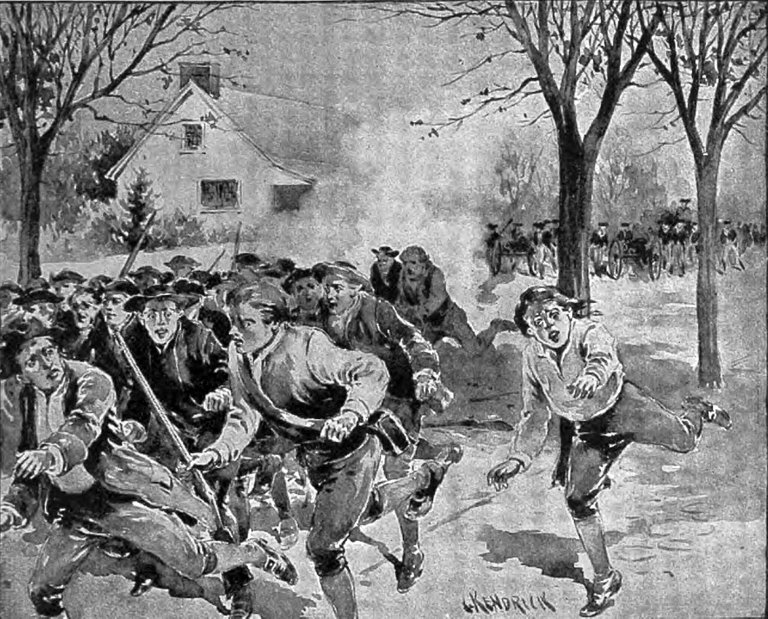
Image credit: C. Kendrik (c. 1902). Public domain.
This armed uprising in Massachusetts was one of the earliest and most significant uprisings by a citizen group against government forces in the United States. Impoverished farmers who were in debt were having their property seized by banks. Many of these farmers were veterans of the Revolutionary War. They had been poorly compensated by the government for their service. Their taxes were onerous, even higher than what the British had charged. There was no dependable currency in circulation. After seeking peaceful redress, and failing to find satisfaction, they took up arms, attacked court houses, judges and banks.
In January of 1787, Daniel Shays led a civilian band of these "Regulators" (that's what they called themselves), 1500 strong, against the armory in Springfield, Massachusetts. Four of the Regulators were killed and the civilian band scattered.
Whiskey Rebellion (1791-1794)
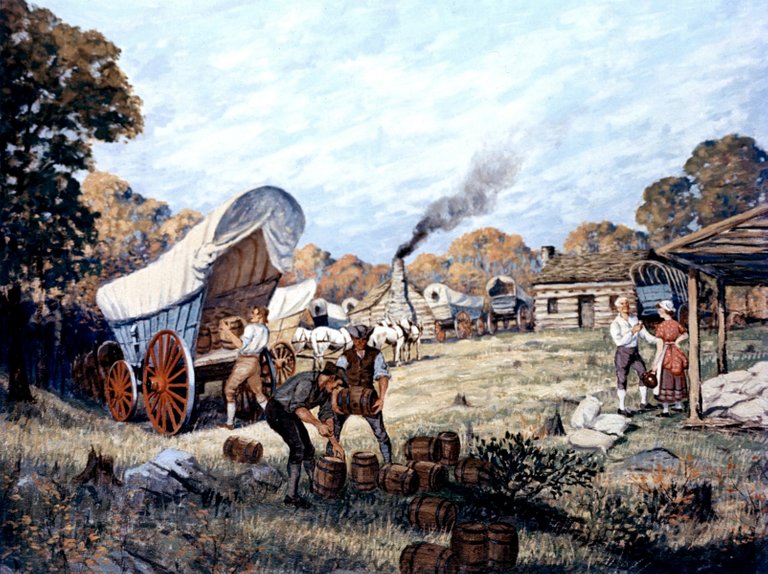
Image credit: Carl Rakeman (1878-1965), for the Federal Highway Administration. Public domain
The scenario that played out in the Whiskey Rebellion had elements startlingly similar to Shays Rebellion. This time, it was rural residents of Western Pennsylvania who rose up against the government because of what they viewed as onerous and unjust taxation.
The conflict originated between farmers with small holdings who had migrated West of the Appalachian Mountains before the Revolutionary War. After the war, land speculators bought up large tracts and the small farmers could not complete. They found selling grain unprofitable, so they turned to making whiskey, which was easy to transport and much more profitable. The problem arose because the federal government tried to impose a whiskey tax.
Hostilities escalated until at one point 7,000 small whiskey producers marched on Philadelphia. Their rebellion was eventually suppressed when George Washington sent forces to put the rebellion down.
Civil War
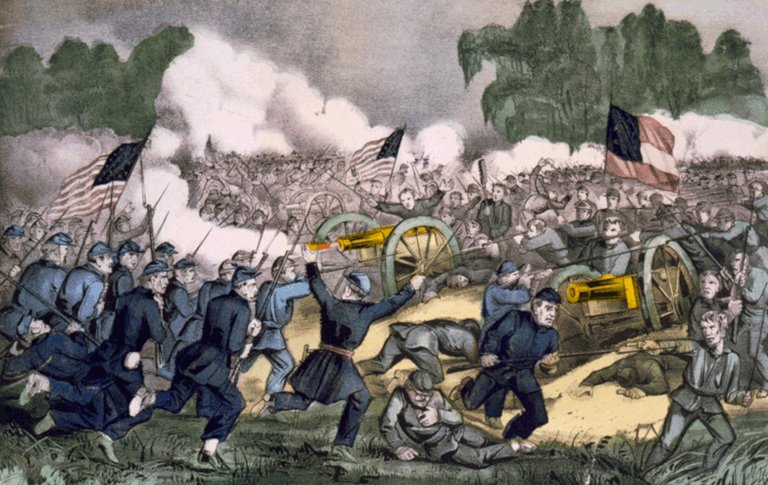
The Civil War in the United States was a conflict of a magnitude that dwarfed Shays Rebellion and the Whiskey Rebellion. This conflict was a rupture from which the United States has not yet healed. One section of the United States, the South, decided it no longer wanted to be part of the country. This break-away entity came to be known as the Confederacy. The rupture, while of a magnitude not seen before in the United States, embodied some of the long-standing divisions that contributed to earlier, smaller revolts.
Of course slavery was on the table. But slavery was a manifestation of a profound cultural and economic divide in the United States. The South was agricultural, with large-scale plantations dependent on free slave labor to thrive. The North was industrial, with a farm sector which did not depend on free slave labor. By 1861, the start of the Civil War, slavery was no longer legal in the North.
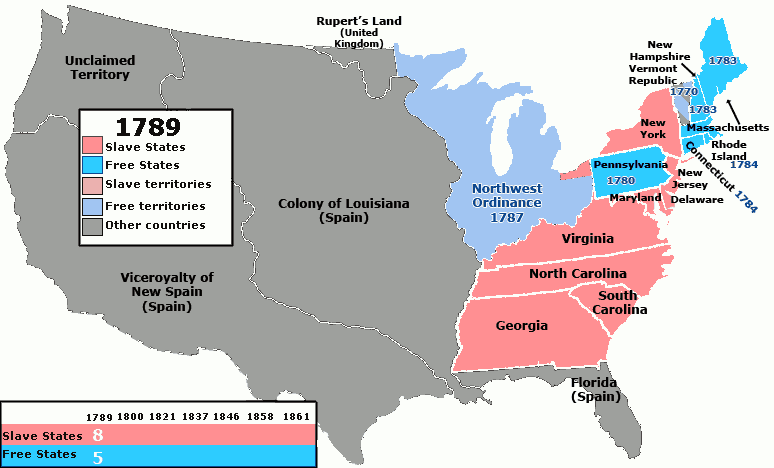
Image credit: Made by user Golbez on Wikimedia Commons. CC license 3.0
The trigger for the secession of the South wasn't the abolition of slavery. It wasn't an armed assault, or a disagreement about taxes. It was an election. The election of Abraham Lincoln was seen as a death knell for slavery and the Southern way of life.
In breaking away from the Union, the South was asserting a right retained by the states (they believed) to be independent entities. This tension between the central government and the states is enshrined in the U. S. Constitution. Responsibilities and rights of each level of government are clearly defined and there is even an Amendment, the Tenth, which declares:
"The powers not delegated to the United States by the Constitution, nor prohibited by it to the States, are reserved to the States respectively, or to the people”
Regional Divisions, Urban vs. Rural, State vs. Central Government
In the uprisings described so far in this blog may be seen the three tensions listed in the heading of this section: Regional Divisions, Urban vs. Rural interest, State vs. Central Government authority. In Shays and the Whiskey Rebellions one can see conflicts between East vs. West, rural vs. city populations, and the rights of the local government sparing with the authority of the federal government. During the Civil War, all three tensions once again come into play: North vs South, industrial vs. agricultural, the right of the states to separate vs. the right of the federal government to prevent the separation.
January 6th as Heir to Everything Above, Especially Revolution
If one listens to the audio that accompanies videos of the Capitol assault, one sentiment stands out: The belief of the rioters that they are patriots who are fighting for the USA. Some of the rioters are members of informal militias that traveled to Washington D.C. to 'take back' their government. In their minds, they are being true to the ideals of the first patriots who laid down their lives for a 'true' government.
Where did they get that idea? Listen to the beginning of this speech by Senator Ted Cruz. You will hear exactly those words. The phrases in Cruz's speech, and the sentiments expressed, were repeated by other Congressional leaders, by pro-Trump newscasters, and by Trump himself in the days preceding the assault.
In his speech, Cruz explains that the voters of Georgia are "just like the patriots who forged this nation, the men and women of Georgia are fighting for the United States of America". Cruz goes on to reference Concord and Yorktown (legendary Revolutionary War battles), although this part of the speech is not available in the link I provide here.
The Role and Tradition of Militias in the United States
In September of 2020, Forbes Magazine ran an article that at the time sounded hyperbolic:
"A MAGA Militia? How The President’s Campaign Is Recruiting An Army For Trump”
The Forbes article explains that Trump actually had a campaign website called, Army for Trump. On the website, according to Forbes, volunteers could become “frontlines”. These Trump Army volunteers would be able to "'work alongside “battle tested Team Trump operatives..."
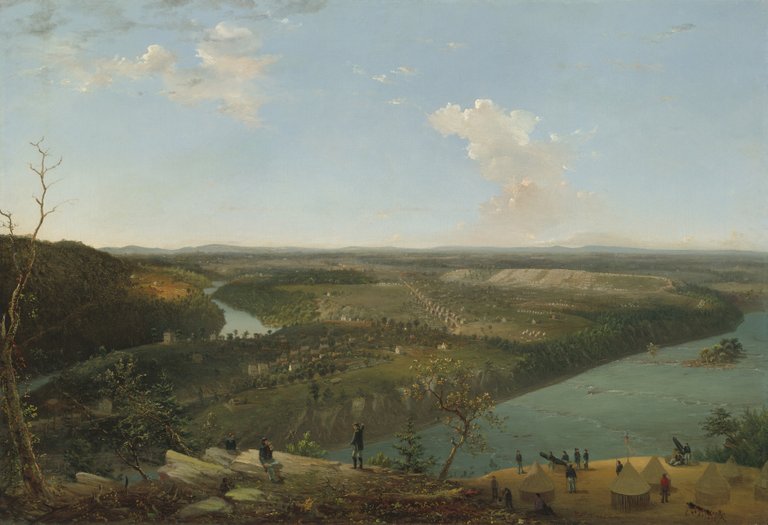
Image credit: The Corcoran Collection, National Gallery of Art, Gift of Genevieve Plummer. Universal Public Domain license. During the Civil War, it was the Maryland Militia that defended Harper's Ferry. There were many militia units in Maryland at the time. Some of them fought on the side of the North and some on the side of the South.
The United States has a long tradition of citizen militias. This tradition reaches back to Colonial America. Each colony had its own militia. Throughout the centuries the idea of citizen militia in the United States has been fluid, with authority shifting between state and central government. Always, however, there were citizens who believed in their right to form citizen militias. The clarity of this issue is clouded somewhat by the wording of the Second Amendment to the Constitution:
A well regulated Militia, being necessary to the security of a free State, the right of the people to keep and bear Arms, shall not be infringed.
Today, all across the United States there are groups that form and characterize themselves as militia. These groups are heavily armed and they train quite seriously for combat. A BBC article tries to describe the current state of the militia movement in the United States. The article comes close but doesn't capture the full spectrum of people who believe in being part of a militia.
This Time It's Different
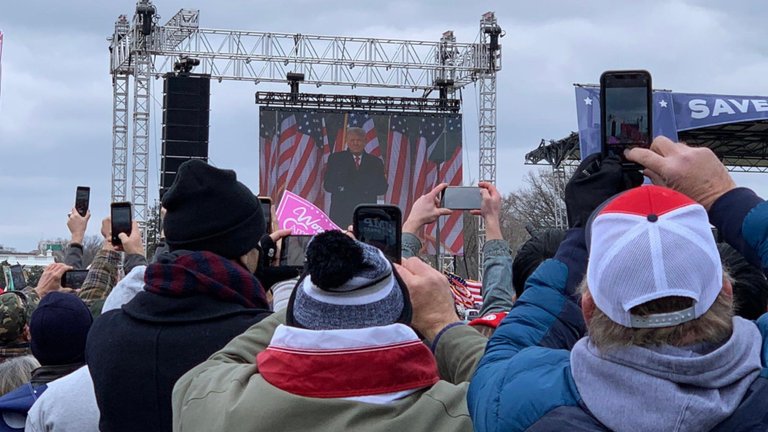
Image credit: Voice of America. Public domain.
The uprising against the United States Congress on January 6, 2021 was different from uprisings that had come before. One aspect of the Capitol assault that distinguishes it from precursor events is that it was instigated by the head of government, the sitting President of the United States. Moments before the rioters descended on Congress, Trump gave a rousing speech that was filled with grievance.
In the speech, Trump urges his followers to be strong. He urges them to fight. He urges them to take back the country. Some quotes from that speech:
And we fight. We fight like Hell and if you don’t fight like Hell, you’re not going to have a country any more.
So we’re going to, we’re going to walk down Pennsylvania Avenue, I love Pennsylvania Avenue, and we’re going to the Capitol
You’ll never take back our country with weakness. You have to show strength, and you have to be strong.
So let’s walk down Pennsylvania Avenue. I want to thank you all. God bless you and God bless America.
An incensed crowd did as he instructed. They walked down Pennsylvania Avenue to the Capitol. The President, despite his promise to join his followers, headed back to the White House. After several hours, with one police officer dead, and legislative leaders huddled behind a small force of determined Capitol police, Trump tweeted a video to the rioters. He repeated his grievances and expressed solidarity with them. Then he said:
So go home. We love you. You're very special.
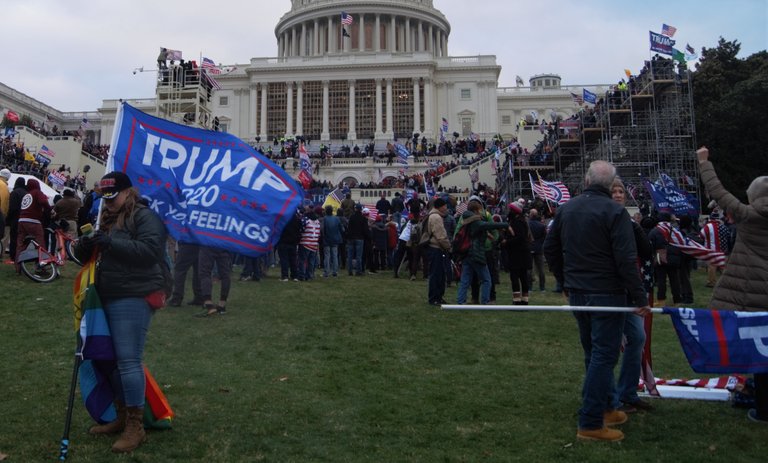
Image credit: Tyler Merbler from USA. CC 2.0 license
The full story behind the assault on the United States Capitol will emerge eventually. Police officers are being suspended or arrested for collaborating with the rioters. One of the activists behind the January 6 event (he is in hiding now), claims that three Congressmen helped him plan to put "maximum pressure" on Congress to overturn the 2020 election results.

Conclusion
If it seems that by writing this blog I understand what happened on January 6th, then I am misleading my readers. There is a cultural and historic context for the assault, but January 6th stands apart from any other U. S. uprising I've studied. In the months before the 2020 election the rhetoric and national temper rose. I thought more of Europe than of the U.S. as tensions heightened. The model of what was happening in the U. S. seemed less like chaotic, spontaneous unrest (which is typical of U. S. history) and more like an organized movement toward autocracy. This is unfamiliar to me, in my country. And so I don't understand it.
I don't know how my country comes out of this. Perhaps we will be stronger. Perhaps we will so fear democratic freedoms that we will limit them. Perhaps the autocratic forces will win out in the end.
All I can do is hope that the better instincts of my fellow citizens will prevail.


Selected Sources Used in Writing This Blog
1.https://www.history.com/topics/early-us/shays-rebellion
2.https://www.encyclopedia.com/history/united-states-and-canada/us-history/whiskey-rebellion
3.https://www.battlefields.org/learn/articles/trigger-events-civil-war
4.https://accesswdun.com/article/2021/1/967354/cruz-to-cumming-crowd-the-men-and-women-gathered-hereare-fighting-for-the-united-states-of-america?utm_source=fark&utm_medium=website&utm_content=link&ICID=ref_fark
5.https://www.forbes.com/sites/sethcohen/2020/09/21/a-maga-militia-how-the-presidents-campaign-is-recruiting-an-army-for-trump/?sh=6e638c861a4d
6.https://www.constituteproject.org/constitution/United_States_of_America_1992
7.https://www.bbc.com/news/world-us-canada-54483973
8.https://www.aljazeera.com/news/2021/1/11/full-transcript-donald-trump-january-6-incendiary-speech
9.https://www.alreporter.com/2021/01/12/brooks-helped-plan-jan-6-event-activist-and-organizer-of-rally-says/
10.https://prologue.blogs.archives.gov/2015/05/18/rogue-island-the-last-state-to-ratify-the-constitution/
11.https://history.house.gov/Historical-Highlights/1700s/Rhode-Island-s-Ratification-of-the-Constitution/
12.https://www.archives.gov/education/lessons/constitution-day/ratification.html
13.https://www.nytimes.com/1993/07/17/opinion/l-if-pollsters-had-been-around-during-the-american-revolution-226393.html
14.https://guides.loc.gov/articles-of-confederation
15.https://constitutioncenter.org/interactive-constitution/blog/today-the-name-united-states-of-america-becomes-offici
16.https://www.smithsonianmag.com/history/myths-of-the-american-revolution-10941835/
17.https://eh.net/encyclopedia/money-in-the-american-colonies/
18.https://www.exploros.com/summary/Differences-Among-Colonial-Regions-2
19.https://www.ncpedia.org/history/usrevolution/reasons
20.https://www.battlefields.org/learn/articles/southern-theater-american-revolution
21.https://www.philadelphiafed.org/education/teachers/resources/money-in-colonial-times
22.https://www.nps.gov/_cs_upload/kimo/learn/education/classrooms/508269_1.pdf
23.https://history.state.gov/milestones/1776-1783/declaration
24.https://www.monticello.org/site/research-and-collections/unknown-patriot
25.https://www.sar.org/wp-content/uploads/2020/04/SAR-Fall-2019.pdf
26.https://www.monticello.org/site/research-and-collections/unknown-patriot
27.https://www.archives.gov/founding-docs/declaration-transcript
28.https://www.history.com/topics/american-revolution/battles-of-lexington-and-concord
29.https://teachinghistory.org/history-content/ask-a-historian/25222
30.https://www.nytimes.com/1993/07/17/opinion/l-if-pollsters-had-been-around-during-the-american-revolution-226393.html
31.https://www.ushistory.org/us/11b.as
As usual A.G. A wonderful documented and well written article.
From Canada I watched in horror as the riot at the capital on Jan 6 unfolded on the news. I feared the democratic system of the U.S.A.was at stake.
Thank you my friend, and thank you for the generous tip. I think the danger to U. S. democracy continues. This is uncharted waters. I've read about the destruction of government in other countries, throughout history. We are not unique. It can happen here.
Let's hope we rise from this disaster stronger.
What we saw on Jan. 6th at the Capitol was an embarrassment to our country and our democracy. Your knowledge of history and current events is extraordinary. Another outstanding blog by this writer.
Your comment is very much appreciated. I love history because it gives us context and perspective. In the heat of the moment all of us can get carried away by passion. Through history perhaps we can gain some understanding and allow our more sensible selves to prevail.Dear @pokerm,
Thank you for visiting my blog and for commenting so kindly.
I've never tried to follow United state's politics or history but this a a beautiful excerpt. The politics of the United States is too fragmented for me to keep tab. It may seems that every damn thing has a political undertone.
Thanks for the usually well researched and written article. I enjoyed every bit of it.
I really appreciate that you read the article. It just seems to me there is so much misunderstanding about what is going on, and what has happened. I thought a little background about U. S. history might help people put the events into context.
Crazy times in the U.S.A. I hope we come out of this with some semblance of democracy intact.
Thanks for your contribution to the STEMsocial community. Feel free to join us on discord to get to know the rest of us!
Please consider supporting our funding proposal, approving our witness (@stem.witness) or delegating to the @stemsocial account (for some ROI).
STEMsocial app could yield even more supporti next time.
Thanks for including @stemsocial as a beneficiary, which gives you stronger support. Using the
Thank you @steemstem for supporting my history post. I'm very grateful :)